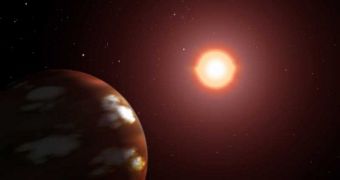A group of astronomers from the University of Geneva in Switzerland announce the discovery of an extrasolar planet that they say may be inhabitable. The object is located in our cosmic backyard, some 36 light-years away in the constellation Vela.
The object orbits the star HD 85512, and is therefore named HD 85512b until astronomers can think of a more appropriate designation. Swiss astronomer Stephane Udry led the team that discovered the world.
In order to discover the small rocky planet, experts used a high-precision echelle spectrograph called the High Accuracy Radial velocity Planet Searcher (HARPS). The instrument is installed on the 3.6-meter telescope the European Southern Observatory (ESO) operates in La Silla, Chile.
In addition to being of Earth-like size and mass, the planet also orbits its parent star inside the habitable zone. Each star system has such a region, where temperature ranges allow for the existence of liquid water on the surface of celestial objects.
HD 85512b orbits its star at around 0.25 astronomical units. An AU is the equivalent of the mean distance between the Earth and the Sun, or around 93 million miles (157 million kilometers).
As such, the exoplanet takes only 54 days to complete a full orbit around the star. According to investigators, it may be that the object has a temperate climate much like Earth does. Calculations show that a functional atmosphere is possible around the planet.
“We model rocky planets with H2O/CO2/N2 atmospheres, representative of geological active planets like Earth, to calculate the maximum Bond albedo as a function of irradiation and atmosphere composition and the edges of the HZ for HD 85512 b,” the team says.
“These models represent rocky geological active planets and produce a dense CO2 atmosphere at the outer edge, an Earth-like atmosphere in the middle, and a dense H2O atmospheres at the inner edge of the [habitable zone],” the investigators add.
“The inner edge of the denotes the location where the entire water reservoir can be vaporized by runaway greenhouse conditions, followed by the photo-dissociation of water vapor and subsequent escape of free hydrogen into space,” the team writes in the journal arXiv.
Conversely, the outer boundaries of the Goldilocks zone consist of the area where even maximum greenhouse effects fail to prevent carbon dioxide from condensing permanently. This is the case with Mars, which lies just outside the Sun's habitable zone, informs Universe Today.

 14 DAY TRIAL //
14 DAY TRIAL //